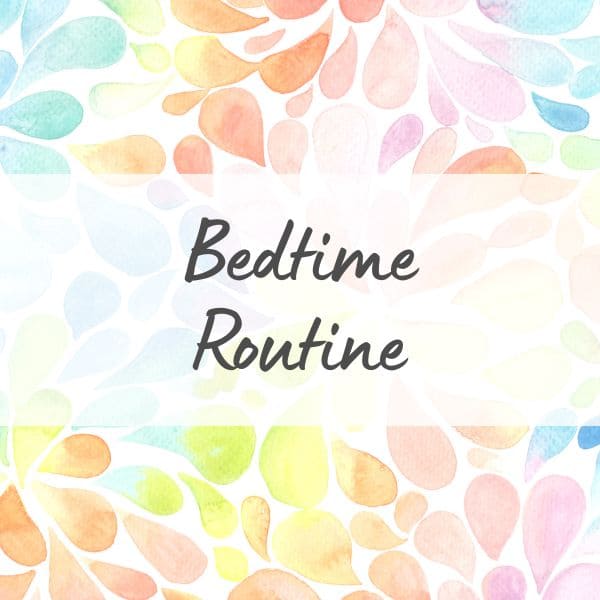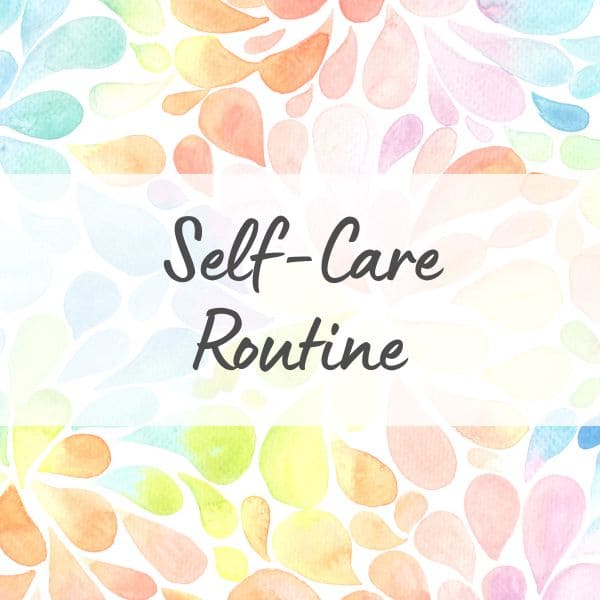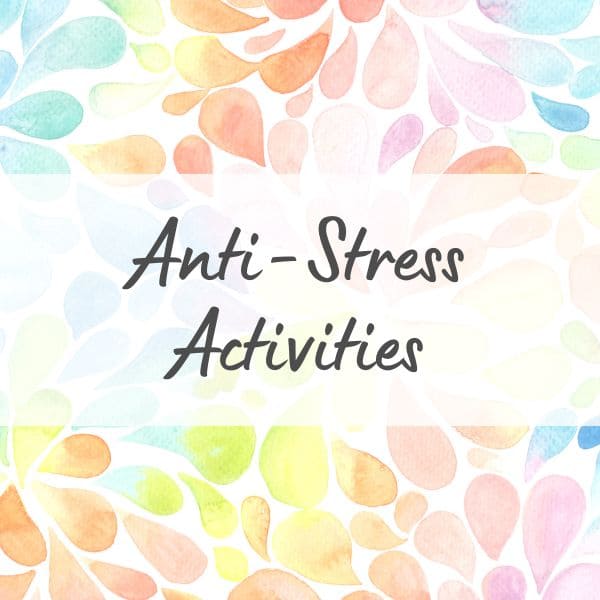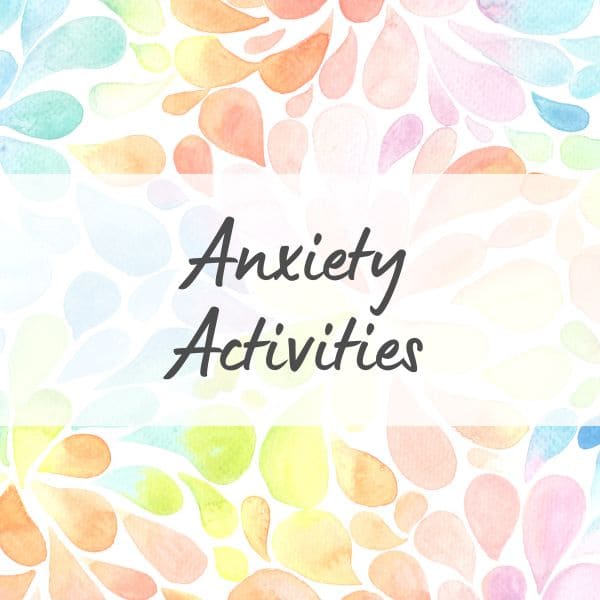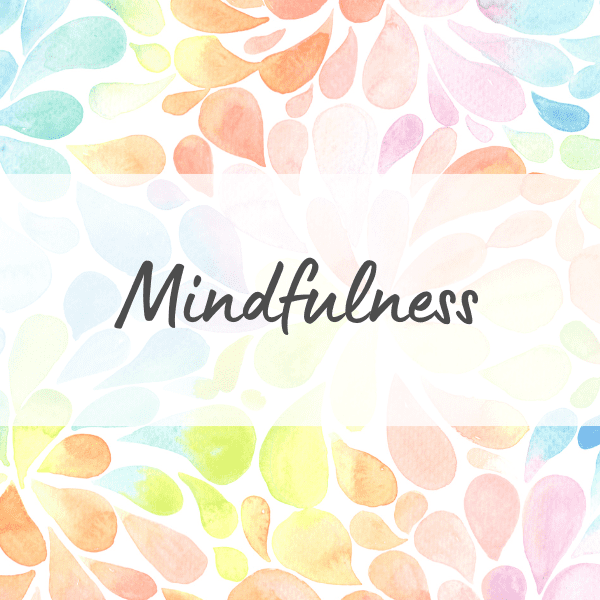Keeping up with daily well-being routines is key to a balanced and healthy lifestyle.
Adding activities that take care of both body and mind can really boost your quality of life. This guide will look at different daily routines and activities aimed at promoting physical health, mental clarity, and emotional resilience.
By adopting these practices, you are taking a first step to a more fulfilling and harmonious life.
Overview
Causes of Stress, Anxiety, and Poor Mental Health
Before we get into the actual routines and activities for a calm and healthy well-being, let’s have a look what can cause these problems in the first place:

Now obviously, there can also be other factors that influence your emotional health, but these once are amongst the most common. Take your time to get familiar with these and check if any of these are causing you stress, anxiety, or other negative emotions.
In the end, the better you know the cause, the easier it will be to find a routine or activity that helps you. With that said, let’s have a look at the various routines.
Kickstart Your Day with an Energizing Morning Routine
Setting up a morning routine can really boost your overall well-being and productivity. By starting your day with intentional actions and habits, you kick off on a positive note that sticks with you.
A structured morning routine can help lower stress, sharpen focus, and lift your mood.
It lets you prioritize self-care and mindfulness, giving you a sense of control and purpose right from the moment you wake up. Whether it’s through exercise, meditation, or just enjoying a healthy breakfast, sticking to a morning routine can lay the groundwork for a more organized and fulfilling day.
Here’s our recommendation for a routine (you can just copy it or adjust it as needed):
- Wake Up Gently: Get up at the same time each day to help regulate your body’s internal clock. Use natural light or a wake-up light alarm clock for a smoother start.
- Hydrate: Grab a glass of water to rehydrate after a night’s sleep, kickstart your metabolism, and help wake you up.
- Meditation and Breathing: Spend 5-10 minutes meditating or doing deep breathing exercises to center your mind and reduce stress.
- Movement: Do a short session of stretching, yoga, or take a brisk walk. This wakes up your body, improves circulation, and boosts energy.
- Personal Hygiene: Shower, brush your teeth, and get dressed. Pick an outfit that makes you feel confident and ready to take on the day.
- Gratitude Journaling: Write down three things you’re grateful for. This helps cultivate a positive mindset and appreciate the good in your life.
- Healthy Breakfast: Eat a nutritious breakfast with protein, healthy fats, and whole grains to fuel your body and brain.
- Plan Your Day: Go over your tasks and priorities. Setting clear intentions helps you stay focused and productive.
- Sunlight Exposure: Spend a few minutes outside or near a window to get some natural sunlight. It helps regulate your sleep-wake cycle and boosts your mood.
- Read or Listen: Take some time to read or listen to something inspirational or educational. It stimulates your mind and sparks new ideas.
- Declutter: Spend a couple of minutes tidying up your space. A clean environment can reduce stress and make you feel more calm.
- Connect: Send a message or make a quick call to a loved one. Starting your day with a positive interaction fosters a sense of connection and belonging.
Revitalize Your Life with a Digital Detox
Creating a digital detox routine can help mitigate the stress and distraction that often come with excessive screen time. By reducing our reliance on digital devices, we can improve our mental well-being, achieve better sleep, and increase our productivity.
A digital detox routine might involve setting specific times during the day to unplug from all devices, such as during meals or an hour before bed. Engaging in alternative activities like reading a book, going for a walk, or spending quality time with loved ones can also be beneficial.
Here’s a suggested routine to get started, but remember, you can always adjust this to fit your personal needs better:
- Set Clear Goals: Start by figuring out what you want to achieve with your digital detox. Want to cut down on social media, limit work emails, or have tech-free times? Clear goals will help guide you.
- Establish Tech-Free Zones: Pick certain spots in your home, like the bedroom or the dining room, as tech-free areas to encourage more face-to-face interactions and reduce screen time.
- Schedule Screen Time: Set specific times for checking emails, social media, and browsing. Stick to these times to avoid mindless scrolling.
- Morning and Evening Limits: Begin your day with at least 30 minutes without screens and wind down an hour before bed without any screens to help improve your sleep.
- Tech-Free Meals: Make a habit of having meals without any devices at the table. This promotes mindful eating and lets you connect more with loved ones.
- Replace Digital Activities: Find non-digital activities to fill the time you’d usually spend on devices. Reading, gardening, cooking, or exercising are great choices.
- Turn Off Notifications: Turn off non-essential notifications to minimize distractions and reduce the urge to constantly check your phone.
- Digital Detox Day: Pick one day a week to go almost entirely without digital devices. Use this time to enjoy hobbies, nature, or just relax and recharge.
A digital detox doesn’t mean cutting out digital devices completely but finding a healthier balance between online and offline life. It’s about setting limits for screen time, prioritizing face-to-face interactions, and doing activities that boost mental well-being.
By consciously dialing back on tech use, you can enhance your overall quality of life and build more meaningful connections.
Incorporate Gratitude into Your Daily Life
Practicing gratitude brings a ton of benefits for both mental and physical well-being. For starters, it can really boost mental health by encouraging positive emotions and cutting down on feelings of depression, anxiety, and envy. It shifts the focus from what’s missing in life to appreciating what’s already there, which can make you feel a lot more satisfied and happy overall.
On the physical side, gratitude is linked to better health. Grateful people tend to engage in healthier behaviors like regular exercise and balanced diets, and they often have stronger immune systems. Plus, practicing gratitude can improve sleep quality by reducing those nagging, negative thoughts that can keep you up at night.
When it comes to social interactions, gratitude strengthens relationships. Saying thank you and showing appreciation can create a stronger sense of connection and deepen bonds, making for a more supportive and connected community. All in all, adding some gratitude exercises into your daily routine can lead to a more fulfilling and resilient life.
- Morning Gratitude Reflection: Kick off your day by thinking about at least three things you’re thankful for. It could be as simple as a good night’s sleep, a sunny day, or a tasty breakfast. Consider jotting these down in a gratitude journal.
- Gratitude Meditation: Set aside a few minutes each morning or evening for some gratitude meditation. Focus on the feeling of gratitude, letting it fill you with warmth and good vibes. Visualize the people, experiences, and things you’re grateful for.
- Send a Thank-You Message: Make it a daily habit to send a thank-you message to someone. It could be a note of appreciation to a coworker, a thank-you text to a friend, or a kind word to a family member. This not only spreads good vibes but also strengthens your relationships.
- Gratitude Reminder: Set a few daily reminders on your phone or computer to pause and think of one thing you’re grateful for at that moment. It’s a great way to break up the day and refocus on the positives.
- Gratitude Jar: Keep a jar, notebook, or digital document where you jot down things you’re grateful for. These can be big wins or simple joys. Review these notes now and then, especially on tough days, to remind yourself of the good stuff in your life.
- Gratitude in Difficult Times: When facing challenges, try to find aspects of the situation you can be grateful for. Finding silver linings can shift your perspective and make problems seem more manageable.
- Share Gratitude with Loved Ones: Regularly share moments or things you’re grateful for with your loved ones. This can be during meals, phone calls, or gatherings. Sharing gratitude can enhance your relationships and encourage mutual appreciation for the simple joys in life.
These gratitude habits are flexible and can fit into any lifestyle, whether you’re super busy or have a more relaxed schedule. The key is consistency and genuine reflection. You might start by keeping a daily journal, jotting down three things you’re grateful for each day, or maybe take a few moments each morning to silently appreciate the good things in your life.
Over time, these practices can change your mindset, leading to more happiness, less stress, and a deeper appreciation for life’s blessings.
Boost Your Life with a Self-Care Routine
Self-care is all about taking intentional steps to look after your physical, mental, and emotional well-being. It covers a wide range of activities that help you stay healthy, manage stress, and boost your overall quality of life. This can mean simple things like getting enough sleep, eating healthy meals, and exercising regularly.
It also means taking time to relax, enjoy hobbies, and do things that make you happy and fulfilled. By making self-care a priority, you can build resilience, avoid burnout, and keep a balanced, healthy lifestyle.
Here are some activities to help you focus on yourself:
- Cuddle with a Pet: Snuggle up or play with your pet to significantly reduce stress and boost happiness thanks to the release of oxytocin, the bonding hormone.
- Enjoy a Cup of Herbal Tea: Make it a habit to prepare and savor a cup of herbal tea. Herbs like chamomile, lavender, and peppermint have relaxing properties that can help soothe your mind and body.
- Nature Immersion: Set aside some time to immerse yourself in nature. Whether it’s a walk in the park, gardening, or just sitting outside, connecting with the earth can ground you and lower stress levels.
- Aromatherapy Session: Use essential oils or scented candles for aromatherapy. Scents like lavender, rose, and vanilla can calm you down, improve your mood, and create a peaceful vibe.
- Warm Bath with Epsom Salts: Take a warm bath with Epsom salts and a few drops of your favorite essential oil. It can relax your muscles, help you sleep better, and give you a quiet moment to yourself.
- Crafting Time: Dive into crafting activities like knitting, drawing, painting, or DIY projects. Crafting can be meditative and give you a sense of accomplishment.
- Listen to a Guided Visualization: Find a guided visualization or audio story that takes you to another place or scenario. It’s a great way to mentally escape and relax deeply.
- Watch the Sunrise or Sunset: Make an effort to watch the sunrise or sunset. This simple act can ground you and remind you of the beauty in everyday moments.
- Try a New Recipe: Cooking or baking something new can be a fun way to take care of yourself and others. The process can be therapeutic, and you get to enjoy the delicious results.
- Stargazing: Spend some time stargazing, whether from your backyard or a local park. The vast night sky can help put problems into perspective and inspire awe.
- Use a Weighted Blanket: Spend part of your relaxation or bedtime routine under a weighted blanket. The gentle pressure can feel like a hug, reducing anxiety and improving sleep quality.
- Listen to Vinyl Records or a Music Playlist: Create a playlist or play some vinyl records to listen to music that soothes or uplifts you. Music can dramatically affect your mood and energy levels.
- Indulge in a Specialty Coffee or Chocolate: Occasionally treat yourself to a high-quality coffee or artisanal chocolate. Savoring small indulgences can be a lovely act of self-care.
- Attend a Workshop or Class: Join a workshop or class that interests you, whether it’s for cooking, photography, dance, or language learning. It can be a refreshing way to engage your mind and meet new people.
- Go on a Date with Yourself: Treat yourself to your favorite restaurant, see a movie you’ve been excited about, explore a museum, or simply have a picnic in the park. Treat yourself with the same care and attention you’d give someone else—it’s a great way to affirm self-love and nurture your relationship with yourself.
A gentle reminder: Taking care of yourself is super important because it directly affects your overall well-being and quality of life. Prioritizing self-care helps manage stress, anxiety, and other mental health issues by giving you the necessary downtime to recharge and restore balance.
Without it, it’s easy to get overwhelmed, leading to burnout and decreased productivity in both personal and professional areas. Plus, making time for self-care boosts physical health by promoting healthier lifestyle choices and better mental resilience.
Create the Perfect Bedtime Routine for a Restful Night’s Sleep
A bedtime routine is a set of activities you do in the same order every night before hitting the sack. This could include things like reading a book, taking a warm bath, doing some relaxation techniques like meditation or deep breathing, and cutting back on screen time.
The secret to a good bedtime routine is doing it consistently.
It signals to your body that it’s time to wind down and get ready for sleep. Having a bedtime routine can really boost the quality of your sleep. It helps reduce stress and anxiety by creating a predictable environment, which makes it easier for your mind and body to transition into a restful state. Plus, it can help regulate your internal clock, so you fall asleep and wake up at the same time every day.
To get you started, we’ve compiled some activities for you (feel free to mix and match them until they fit your needs):
- Stick to a Consistent Sleep Schedule: Try to go to bed and wake up at the same time every day, even on weekends. This helps keep your body’s internal clock on track and improves sleep quality.
- Unplug from Digital Devices: Turn off screens (phone, computer, TV) at least an hour before bed to cut down on blue light, which can mess with your sleep.
- Have Some Evening Herbal Tea: Sip on a cup of herbal tea like chamomile, peppermint, or lemon balm, known for their relaxing effects. Avoid caffeine in the late afternoon and evening.
- Take a Warm Bath or Shower: A warm bath or shower can help relax your muscles and lower your body temperature, signaling that it’s time to sleep.
- Create a Cozy Sleep Environment: Make sure your bedroom is comfy for sleep. This includes a good mattress and pillows, a cool room temperature, and minimal noise and light.
- Wear Comfy Pajamas: Pick soft, breathable sleepwear to stay comfortable all night.
- Do Relaxation Techniques: Try deep breathing exercises, progressive muscle relaxation, or gentle yoga stretches to calm your body and mind.
- Read a Book: Reading under soft lighting can help you unwind. Pick something light or inspirational to keep from getting too stimulated.
- Journal: Spend a few minutes reflecting on your day or writing down things you’re grateful for. This can help ease anxious thoughts and focus on the positives.
- Set Goals for Tomorrow: Quickly plan out your next day or jot down any pressing thoughts. This can help clear your mind and reduce worry about forgetting important tasks.
- Listen to Calming Sounds or Music: Soft music, white noise, or nature sounds can create a peaceful atmosphere perfect for sleep.
- Practice Mindfulness or Meditation: Center your thoughts and release tension with mindfulness or meditation. Guided sleep meditations can be really helpful.
- Dim the Lights: Lower the lights an hour before bed to help boost your body’s melatonin production, the hormone that regulates sleep.
Activities to Try on Stressful Days
Reducing stress throughout the day can really boost your overall well-being and improve your sleep.
By exploring different ways to manage stress, you can enhance your mental and physical health, increase productivity, and strengthen your relationships. Some stress-busting techniques include mindfulness, regular exercise, healthy eating, and making time for hobbies and activities you love.
Everyone’s unique, so it’s worth experimenting to find what works best for you. Here are some ideas to try:
- Take Breaks: It’s crucial to take breaks throughout the day, especially if you have a desk job or a sedentary lifestyle. Getting up and moving around can boost blood flow and ease tension.
- Regular Physical Activity: Exercise releases endorphins, your body’s natural stress busters. Whether it’s yoga, walking, or something more intense, staying active helps.
- Mindfulness and Meditation: Practicing mindfulness through meditation, breathing exercises, or yoga can center your thoughts and reduce anxiety.
- Quality Sleep: Make sure you’re getting enough quality sleep. Lack of sleep can ramp up stress, so prioritize a good sleep routine.
- Healthy Eating: A balanced diet with plenty of fruits, veggies, lean protein, and whole grains provides the nutrients your body needs to handle stress.
- Time Management: Organize your time to avoid last-minute rushes. Break tasks into chunks and set realistic deadlines.
- Digital Detox: Limit your screen time, especially on social media, to avoid information overload and the comparison trap.
- Connect with Others: Spend time with family and friends. Social support can give you a sense of belonging and reduce stress.
- Explore New Interests: Get into activities you enjoy, like reading, crafting, or gardening. Hobbies are great for stress relief.
- Deep Breathing Exercises: Simple deep breathing techniques can calm your mind. Try the 4-7-8 technique or box breathing.
- Laughter: Watch a funny movie, listen to comedy podcasts, or hang out with friends who make you laugh. Laughter can lower stress hormones.
- Nature Walks: Spending time in nature can lower stress levels, boost your mood, and improve mental well-being.
- Professional Help: Don’t hesitate to seek help from a therapist or counselor if stress becomes overwhelming. Professional guidance can be invaluable.
- Music and Dancing: Listening to soothing music or dancing to your favorite tunes can lift your mood and reduce stress.
- Journaling: Writing down your thoughts, feelings, and worries can help clarify your thoughts and act as an emotional release.
- Gratitude Practice: Focus on the positives and keep a gratitude journal to shift your mindset away from stressors.
- Learn to Say No: Setting boundaries and knowing your limits is crucial to prevent overcommitment and reduce stress.
- Coloring or Doodling: Adult coloring books or just doodling can be meditative and a creative outlet for stress relief.
- Puzzles and Brain Games: Puzzles like Sudoku, crosswords, or logic games can distract your mind from stress and enhance cognitive function.
- Virtual Travel: Explore new places from home with virtual tours of museums, historical sites, or natural wonders. It’s a fun way to escape and learn something new.
- Create a Comfort Box: Fill a box with items that soothe you—soft textures, favorite scents, comforting teas, or cherished photos. Use it whenever you need a stress break.
- Volunteering: Helping others can give you perspective, reduce stress, and boost your mood through the satisfaction of aiding those in need.
- Stargazing: Take some time to look at the stars. It can be a peaceful activity that helps put life’s challenges into perspective.
- Learn a New Language: Challenge yourself with learning a new language. It can be a stimulating distraction and a rewarding way to focus your energy.
- Bonsai Trimming: The art of bonsai involves mindful trimming and care of miniature trees. It’s a practice that requires patience and focus, providing unique stress relief.
- Cloud Watching: Lie back and watch the clouds pass by. Imagining shapes and stories in the clouds can be a fun and relaxing way to clear your mind.
Choosing a way to de-stress can feel overwhelming with so many options, but it gets easier by focusing on a few key factors. First, think about your interests and hobbies. Doing something you enjoy is more likely to bring quick relief. For instance, if you love being outdoors, a nature walk or some gardening could be perfect.
Next, consider your energy levels. If you’re feeling tired, go for a calming activity like reading or yoga. If you have a lot of energy, try something more active, like dancing or jogging.
Lastly, consider the time you have. Short on time? Quick stress-relief activities, like listening to a favorite song or doing some breathing exercises, can fit right in.
By tailoring your choice to your interests, energy, and available time, you can manage stress more effectively and boost your overall well-being.
Activities for When You Are Feeling Anxious
Relieving anxiety means doing things that calm your mind, reduce tension, and make you feel better overall. By adding some relaxing activities to your daily routine, you can really boost your mental health and quality of life.
Here’s a list of activities that can help ease anxiety, from physical exercises to mindfulness techniques and creative outlets that can noticeably improve how you feel:
- Deep Breathing Exercises: Try deep breathing techniques like diaphragmatic breathing or the 4-7-8 method to help chill out.
- Progressive Muscle Relaxation (PMR): Tense and then slowly release each muscle group, starting from your toes and working up to your head.
- Guided Meditation: Use meditation apps or online videos that focus on relaxation and anxiety relief.
- Mindfulness Practice: Do mindfulness exercises, like mindful eating or walking, to stay present and avoid anxious thoughts.
- Physical Exercise: Get moving with activities you enjoy, like walking, running, cycling, or yoga, to reduce stress and boost endorphins.
- Nature Walks: Spend time outdoors in green spaces to lower stress levels and lift your mood.
- Journaling: Write down your thoughts and worries. It can help make overwhelming feelings more manageable.
- Aromatherapy: Use essential oils like lavender, chamomile, or rose for their calming effects in a diffuser or applied with a carrier oil.
- Herbal Teas: Sip on herbal teas like chamomile, peppermint, or passionflower for their soothing properties.
- Limit Caffeine and Sugar Intake: Cut back on caffeine and sugar, which can make anxiety worse.
- Reading: Get lost in a good book to escape stress and engage your mind.
- Listening to Music: Listen to soothing or uplifting music. Creating a playlist for anxious moments can be really helpful.
- Creative Arts: Get creative with painting, drawing, crafting, or playing an instrument to express yourself and reduce anxiety.
- Social Support: Talk to friends, family, or support groups about your feelings in a safe space.
- Cuddle With Pets: Spending time with pets can boost oxytocin levels, helping reduce stress and anxiety.
- Practice Gratitude: Reflect on what you’re grateful for each day. Keeping a gratitude journal can shift focus from anxiety to positivity.
- Watch Comedy: Laughter reduces stress hormones, so watch your favorite funny movies or shows to lighten your mood.
- Sleep Routine: Stick to a consistent sleep schedule and create a relaxing bedtime routine to improve sleep quality and manage anxiety.
- Breathing with a Window Open: Fresh air and a slight change in environment, even just opening a window, can alter your mood and ease anxiety.
- Try New Hobbies: Discover new interests to distract from anxious thoughts and give you a sense of achievement.
- Limit Screen Time: Set boundaries for digital devices and social media to prevent information overload and reduce anxiety.
- Anxiety Workbooks: Use workbooks designed to help manage anxiety with cognitive-behavioral techniques and exercises.
- Visualization Techniques: Practice visualizing calming scenes or successful outcomes to anxiety-inducing situations.
- Acupuncture or Massage Therapy: Consider acupuncture or massage therapy to physically reduce stress and anxiety.
- Hot Baths: Take a hot bath to relax tense muscles, calm your mind, and prepare for rest, reducing overall anxiety.
Discover the Power of Mindfulness
Mindfulness is all about being fully present and engaged in the moment, aware of your thoughts, feelings, and surroundings without judgment. By practicing it, you can gain a deeper understanding of your mental and emotional landscape, leading to greater self-awareness and emotional control.
The perks of mindfulness are numerous.
It helps reduce stress and anxiety by shifting your focus away from worries about the past or future and centering you in the present. This presence can bring a sense of calm and clarity, helping you respond more rationally and thoughtfully to tough situations.
The next time you need a breather, try one of these mindfulness activities:
- Deep Breathing: Take slow, deep breaths to help you relax.
- Body Scan: Notice different parts of your body from your toes to your head to release tension and become more aware.
- Mindful Walking: Walk slowly and pay attention to your steps and the feeling of the ground beneath you.
- Meditation: Set aside some quiet time to sit and observe your thoughts and feelings without getting too attached.
- Mindful Eating: Enjoy every bite of your food, noticing the textures, flavors, and sensations.
- Progressive Muscle Relaxation: Tense and then gradually release each muscle group to ease physical tension.
- Mindful Listening: Fully engage when listening to music or someone speaking, focusing completely on the sounds or words.
- Visualization: Imagine a peaceful place or scene to help shift your mental state to calm.
- Loving-Kindness Meditation: Develop feelings of compassion and love for yourself and others to boost emotional well-being.
Activities to get you out of a funk and straight into a good mood
Life has its ups and downs, and sometimes we all need a little help getting out of a funk. This section is all about easy ways to lift your spirits and find joy, even on tough days.
Whether you need a quick pick-me-up or something more immersive, the following section is packed with ideas to help you feel better. Try something new, and see what works for you. Sometimes, a little change is all it takes to turn your day around.
- Watch a comedy show or movie
- Try a new hobby
- Cook or bake something delicious
- Call a friend or family member
- Write in a journal
- Re-read your favorite book
- Take a long, relaxing bath
- Do some gardening
- Practice yoga
- Doodle (no pressure!)
- Do a puzzle or play a game
- Spend time with pets
- Declutter a small space
- Volunteer or do a good deed
- Plan a future trip or activity
- Get some sunlight
- Look through old photos
- Try aromatherapy
- Do something creative with your hands
- Have a mini dance party
- Watch cute animal videos
- Go stargazing
- Take a scenic drive
- Sing out loud
- Do a random act of kindness
- Have a picnic
- Attend a local event
- Visit a botanical garden
- Do a digital detox
- Go to the beach
- Have a spa day at home
- Make a list of things you love about yourself
- Visit a zoo or aquarium
- Go on a photography walk
- Make a scrapbook
Keep experimenting, that’s half the fun
Remember, everyone’s needs are different, so what works for one person might not work for another. It’s all about finding what helps you personally deal with your bad habits and problems.
Don’t be afraid to try new things and experiment until you find the right mix of strategies that work for you. This can also lead to discovering new hobbies or interests that bring joy and relaxation into your life.
Also, keep in mind that building healthy habits is an ongoing process.
It might take some time and patience to figure out what works best for you, and even then, some strategies might work better at certain times than others. Be open to tweaking and adapting as needed, and don’t get discouraged if something doesn’t work right away.
And most importantly, be kind to yourself throughout this journey.


